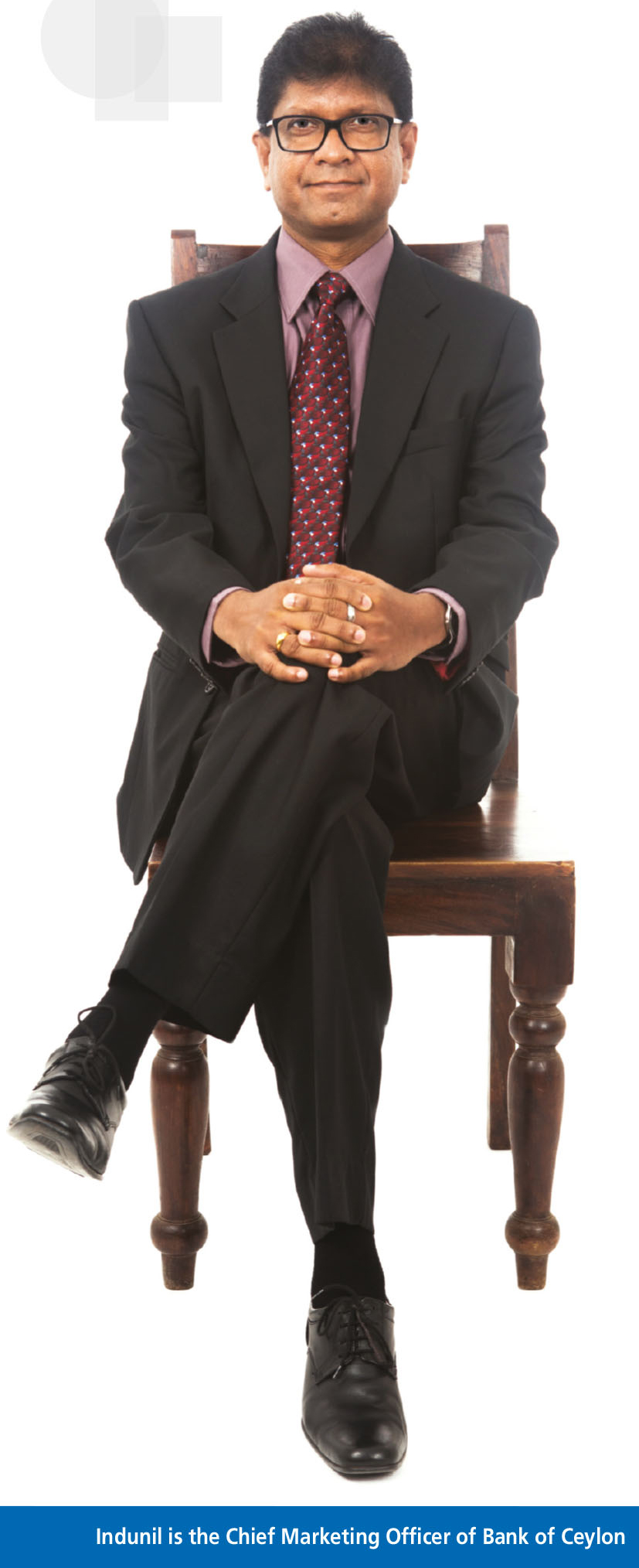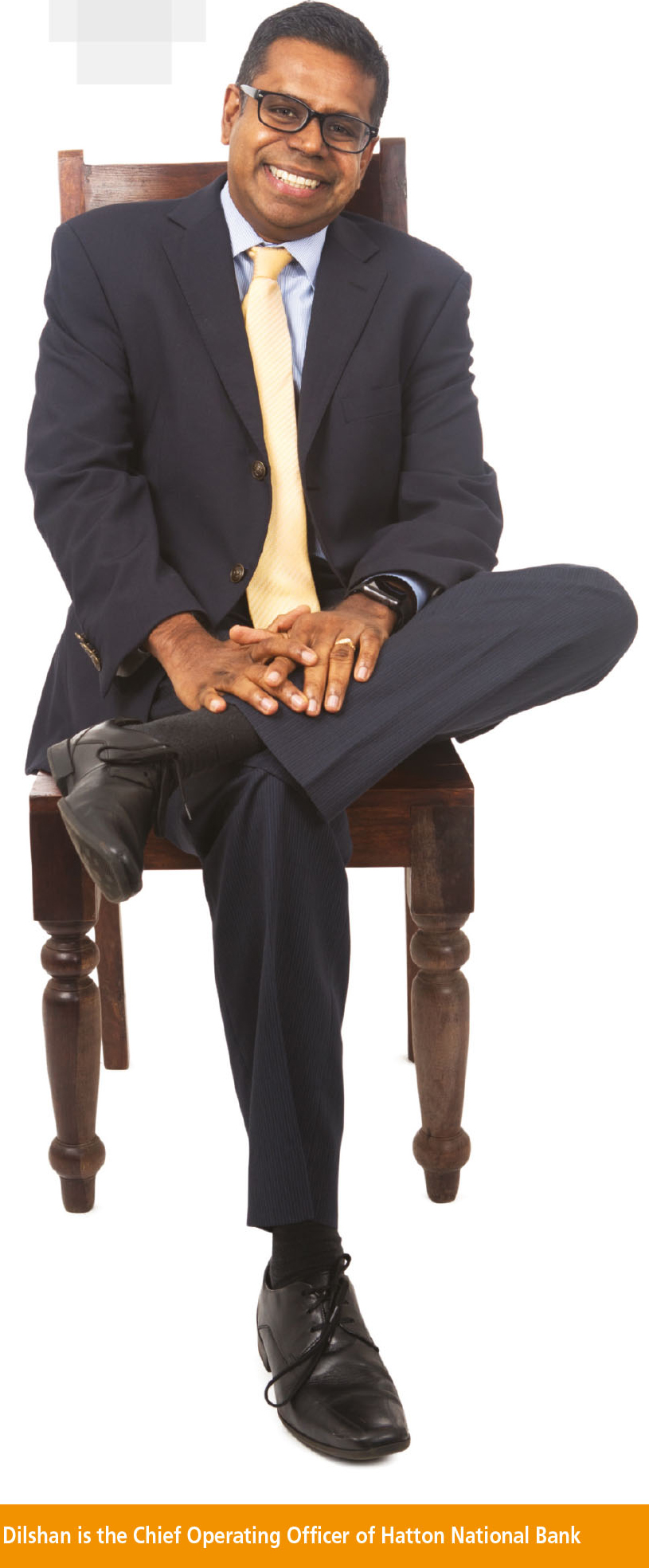BANKING SECTOR
SHORT TAKES
Compiled by Savithri Rodrigo

Q: How would you describe the performance of banks in the island?
Dr. Indunil Liyanage (IL): All are performing really well at this juncture, and we observe an upward trend in both private and state banks.
Dilshan Rodrigo (DR): The banking sector has displayed resilience and performed commendably. It has effectively weathered many storms – viz. the global economic crisis in 2008, the pawning fiasco in 2011, challenges posed by increased regulatory oversight, and the rapid emergence and growth of fintechs in recent times.
Q: Which segments of banking display the most promise?
IL Growth primarily stems from the retail and personal banking segments, although there are opportunities in SMEs and microfinance, which will undeniably be the backbone of our economy in the future.
DR Value added exports, business process outsourcing (BPO), knowledge process outsourcing (KPO), and SMEs and microfinance in line with national priorities.
Q: Do you expect macroeconomic pressures to put pressure on banks’ credit metrics?
IL This could be the buildup of short-term pressure although emerging new projects coupled with the government’s development programmes and plans will herald multifaceted opportunities for banks.
DR There’s a noticeable slowdown in public sector infrastructure spending. This has contributed to general constraints in economic activity this year, and exerted pressure on credit growth and asset quality. However, we remain upbeat amid the Colombo International Financial City (Port City) project, construction of low income housing, highways, innovative transportation solutions and other initiatives.
Q: Could you highlight the main concerns on the regulatory front?
IL To maintain governance, it is imperative that the regulatory environment is maintained; this is not only for the banking sector but industry as a whole.
DR Several initiatives have been taken to liberalise the economy, simplify tax structures and foreign exchange regulations. However, a gap exists between policy intentions and clarity of implementation. Banks are relentlessly targeted for tax revenue and over-regulated, which makes the digital transformation journey difficult.
Q: How are the Basel III capital requirements impacting banks?
IL Banks must look towards consolidation if the capital requirement is insufficient. The way forward would be for mergers and acquisitions especially for smaller banks.
DR There’s a focus on improving liquidity and quality of capital, leading to a spate of rights and debenture issues. Pressure on state banks and smaller banks could lead to consolidation. The associated three percent increase in capital translates into a contraction of about Rs. 150 billion in the lending book, which could otherwise be used in productive economic sectors.
Q: What do you make of calls for environmental and social risk management?
IL Most banks maintain environmental and social risk management processes, which infuse sustainable financing practices for funding projects and businesses. It is mandatory to adhere to these processes when lending and funding projects.
DR Sustainable banking is an age-old philosophy. At Hatton National Bank, we integrate sustainable practices into our business model, which includes green buildings, paperless offices and responsible lending. Our 25-year-old microfinance lending model is a benchmark for entrepreneur creation, development of the rural economy, organic lending, multinational linkages, financial literacy and exceptional asset quality.
Q: Is the banking sector doing enough to push e-commerce?
 IL Yes. Most banks are taking the bold step of permeating e-commerce across the country. Digital transformation is rapid, and nearly all banks are in the process of implementing digital channels and platforms to meet customer aspirations.
IL Yes. Most banks are taking the bold step of permeating e-commerce across the country. Digital transformation is rapid, and nearly all banks are in the process of implementing digital channels and platforms to meet customer aspirations.
DR E-commerce provides a wonderful opportunity to grow business. Banks and venture capitalists need to recognise and support promising e-commerce endeavours. There is also an opportunity to collaborate with the local ICT industry to develop innovative product offerings.
Q: Does the sector suffer from a concentration of risk with banking assets being in the hands of a few players?
IL State banks are leading the charge to penetrate rural areas and facilitate financial inclusion across the country. Most other players concentrate on urban and semi-urban areas, and middle and upper income segments. This has to change to reduce the concentration of risk.
DR Not really; with eight banks accounting for 85 percent of banking assets, there’s room for further consolidation. The benefits of consolidation will translate into economies of scale for customers through shared ATMs, digital delivery channels and technology.
Q: Is the banking sector likely to consolidate and reshape itself going forward?
IL Most banks are concentrated in urban environs. They’re catering to middle income segments, and focussing on salaried employees, a few SMEs and corporates. This has to change as the banking sector must increase scale and spread its wings across the country to realise inclusive economic growth.
DR Yes. Increased regulation, capital requirements, and competition from telcos and fintechs will drive this across the financial services industry, in insurance, stockbroking, leasing and finance companies.
Q: What avenues are available for banks to innovate and expand?
IL Digital transformation and technology is the key innovator for expansion tools that drive the younger generation. Remote delivery channels are now an imperative with a number of initiatives including 24 hour cheque deposits, cash deposit machines, ATMs, and online and mobile apps offering ease of access to banking anytime, and anywhere.
DR Banking must complement customers’ digital lifestyles, which implies online convenience in real time. Banks that adapt to the cashless, cheque-less and paperless future will expand, and thus thrive.
Q: What do you see on the horizon for the banking sector?
IL The sector will undoubtedly become more technologically savvy, expanding rapidly through innovation driven by the mobile phone. This is what will drive the future and we must be ready for it!
DR Improved financial inclusion through digital product offerings, collaboration with fintechs and consolidation – banks that successfully transform their business into the digital space will lead the charge.



